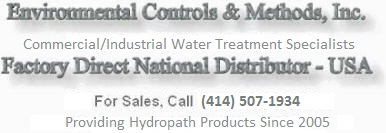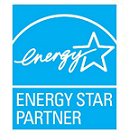| Q.
|
The Stack Draft Regulator System sounds like a great
device. If it's so good, why haven't I heard about
it before? |
| A. |
The inventor of the SDR System wanted
to be sure that all of the appropriate patents were
in place or pending before the product was
introduced on a large scale. In Canada he wanted to
secure the CSA approval as well. That is all done
and the product is being rolled out now on a serious
basis. In Canada it is currently available in
British Columbia,
Alberta and Ontario, followed quickly by the other
provinces and territories. |
| Q. |
Is the Stack Draft Regulator System approved for
installation in Canada? |
| A. |
Yes. The SDR System is CSA approved
under Lab Standard 003b for all natural draft
boilers, furnaces and hot water heaters. The CSA Lab
Standard 003b was essentially written specifically
to deal with the SDR System and is
currently in the final stages of revision and will
include all power boiler systems in the revised
standard. The CSA compliance certificate number is
1346651. CSA approval is not necessarily required by
the approving governmental authority in each
province.
In the United States the SDR is already
being installed on both natural draft and power
systems. |
| Q. |
Can I use my own staff or my own contractor to
install the SDR System? |
| A. |
If you prefer to have your own staff or
contractors install the SDR System, it
can be done under the close supervision of one of
our trained and approved installers. Your staff or
contractor, as the case may be, must be government
licensed gasfitters. |
| Q. |
Is there product liability insurance in place? |
| A. |
Yes, there is extensive product liability
insurance in place through The Hartford Insurance
Company and Lombard General Insurance Company.
Copies of insurance certificate are available on
request. |
| Q. |
Will the SDR System harm my equipment
or affect my manufacturer's warranty for my boiler
or furnace? |
| A. |
No. The SDR System is installed in
the stack for your equipment, not your furnace or
boiler, so there are no modifications to your
equipment. After the installation of the SDR System, draft conditions are tested and
confirmed to meet both manufacturer and government
specifications. As part of the installation process
the combustion efficiency of your equipment is
tested and, if necessary, adjusted to the improved
draft conditions of your stack. |
| Q. |
Will the SDR System cause condensate
problems in the stack? |
| A. |
No. Condensate problems are caused by
temperature fluctuations in the stack that are
common with the on/off cycling of your furnace or
boiler. The SDR System never closes the
stack and in fact regulates the stack temperature in
both the on and off cycles, so condensate problems
are either reduced or prevented. |
| Q. |
Is the SDR System suitable for all
systems? |
| A. |
No. But it is suitable in approximately 90% of
systems and will provide substantial cost savings.
It is designed for gas and oil fired furnaces,
boilers and hot water systems. Some situations where
it is not suitable include installation with
condensing boilers and where existing equipment is
at the point of needing replacement. Also, the SDR
is not intended for systems which already have
stack-side O2 trimmers in place.
In all
instances our pre-install inspection process
verifies the suitability of the SDR System for installation. |
| Q. |
We have boilers that our consultant tells us are
already operating at a really high efficiency. Can
the SDR System still produce worthwhile
savings? |
| A. |
Yes, typically worthwhile savings can still be
produced. Even in high efficiency systems there is
still excess air and excess oxygen. That means that
savings are still possible. |
| Q. |
What happens if I change out some of my
equipment after the SDR System has been
installed? |
| A. |
One of the great features of the SDR
System is that it becomes a part of your stack and,
in most cases, can be utilized with replacement
equipment provided the stack is not changed. The
only requirement is that the SDR System
will need to be adjusted in conjunction with the
installation of your new equipment to ensure that
draft conditions are optimized within the
manufacturer's specs. In instances where the stack
is changed with the equipment we provide replacement
SDR System at minimal cost to ensure you
can continue to enjoy the savings produced by the
SDR with your new equipment. |
| Q. |
How do we determine savings attributed to the
SDR System if I'm also implementing other
energy savings measures? |
| A. |
The best thing to do is to stage your energy
savings initiatives so that you have the chance to
assess the savings from each measure before you move
on to the next one. We recommend that when the
SDR System is installed that its
performance be monitored for two to three months
before you change anything else. That way you'll
have a good indication of the fuel and cost savings
coming from the SDR System. |
| Q. |
OK. I'm convinced that the Stack Draft Regulator System
will save me money. What do I do next? |
| A. |
Call us to schedule a
feasibility study at your facility. |





